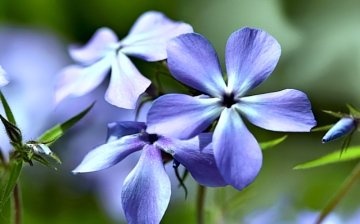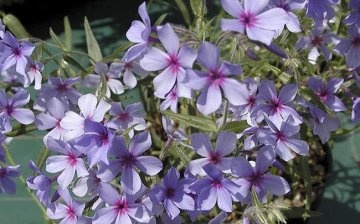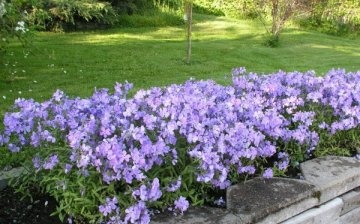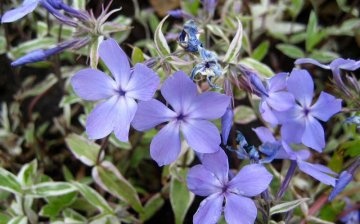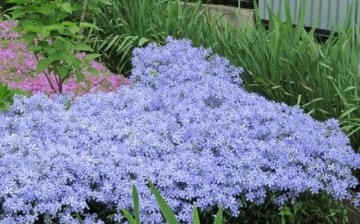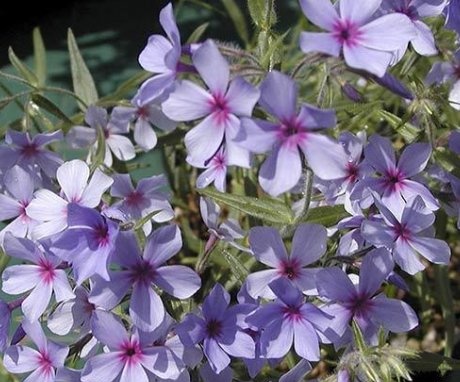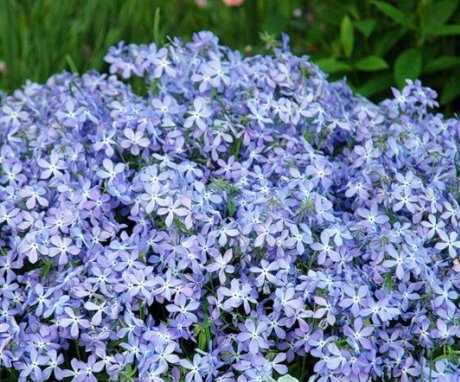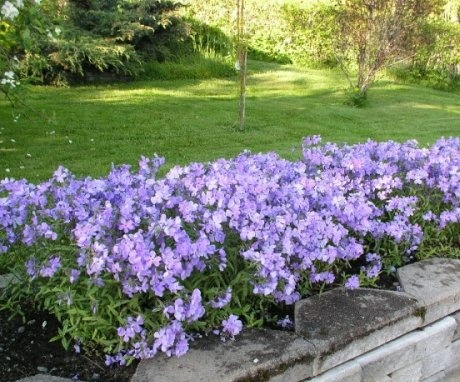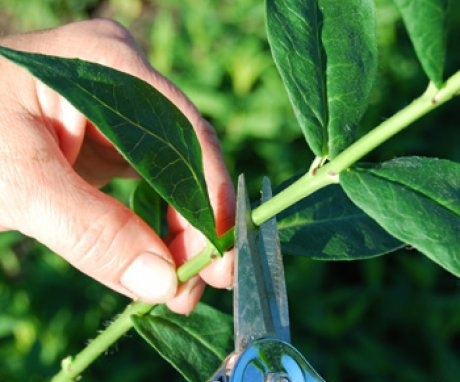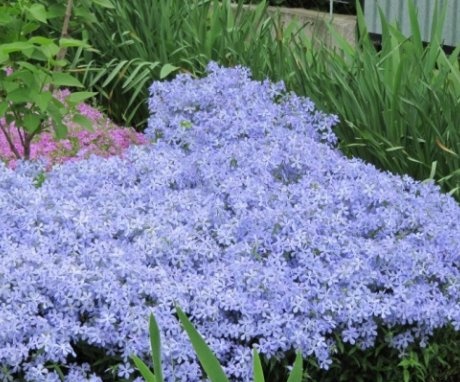Spreading phlox: a beautiful and unpretentious perennial
Spreading phlox is a perennial plant, these are small loose bushes up to 25-30 cm high. Its leaves are oblong.
Its natural habitat is the eastern United States and Canada. Grows in mountains and humid forests. Phlox planted in rock gardens, rocky gardens, rockeries. When it fades, it loses its decorative effect. Phlox almost does not form seeds, because of this they are propagated by dividing the bush or by cuttings, layering.
Content:
- Phlox varieties
- Growing conditions
- Care Tips
- Reproduction methods
- Diseases and pests
- Preparing phlox for winter
Phlox varieties
Popular phlox varieties for growing:
- Blue Dreams. It has flowers that resemble a lilac-blue star. There is a dark eye in the center of the flower.
- "Laphamia", it has long-tubular purple flowers, very dark.
- "Clouds of Perfume". This is a tall plant with lilac flowers with a smell lavender.
- May Breeze. His flowers are large, white-lilac with lilac stars in the center.
- "Variegata". Variegated flower with white and green leaves.
- "Sternensplitter". The variety has lilac flowers with darker stars inside.
- "Dirigo Ice". It has large creamy blue flowers with a purple eye.
- Fullers White, it has white flowers.
- "Montrose Tricolor". Its leaves are three colors - white, green and pink, blue flowers, grows up to 30 cm.
Growing conditions
The plant is not very demanding on the soil, but it likes loose, water-free, slightly acidic soils with a large amount of humus. Necessary phloxes plant in areas where groundwater is deeper than 15 cm.If you have a site with close groundwater, then make beds 15 cm high.
The plant tolerates both sun and shade well.
The best place is where it is sunny in the morning and there is shade at noon. Plants are planted at a distance of 30 cm. After they have faded, it is necessary to remove all faded shoots with a pruner. This is done every year. But 10 cm of the stem is left.
It is necessary to constantly monitor so that the plantings do not overgrow weedsotherwise they may germinate through the plant. If this happened, then in the fall they dig up phloxes, divide the bushes and plant them in a cleared and fertilized place.
Care Tips
From the beginning of spring, when there is an accelerated growth of the stem and leaves, they are fed with nitrogen fertilizers... During the formation of buds and flowering bring potassium and phosphorus. When the plant has bloomed, it needs phosphorus. With an oversupply fertilizers the stems crack, the inflorescences become loose, with a deficiency, the flowering period is reduced, the color becomes not so bright, the flowers become smaller.
Plants need to be spilled 4-5 times with liquid top dressing... In May, do 1-2 fertilizing with fertilizers with an increased dose of nitrogen. In the first feeding, you can make an infusion of ash, dolomite flour, green manure, mullein, nettle. In the second, 3 g of ammonium nitrate is added to the Kemira Kombi solution (20 g per 10 l). In early June, they are fed with nitrogen-potash or complex fertilizers.
When the buds are laid, feed the flowers with a solution of full mineral fertilizer.
When the plants have just faded, phosphorus-potassium fertilizers are applied to the soil.It is better to water phloxes in the evening with warm water. To preserve moisture, it is useful to mulch them from above. The plant can die if the water is stagnant.
Reproduction methods
Reproduction by layering. Roots may appear on those stems that are bent to the ground. By the beginning of summer, the soil around the bush is loosened, watered, the stems are laid out, then they are pinned with slingshots from the branches and pressed down with stones, sprinkled with soil a little. They constantly moisten the soil. Then, by the fall, rooted layers appear, they can be planted in the spring.
Reproduction cuttings:
- Long stems of the plant should be cut into pieces, each piece should have 3-4 internodes.
- From below, from 2 internodes, pinch off the leaves, as well as side branches, insert this part of the cutting obliquely into the loose ground.
- A distance of 5 cm is left between the two cuttings, 10 cm between the rows.
- The bed is covered with polyethylene film.
- The next year, the rooted cuttings are planted in a permanent place.
- Cuttings are immediately watered with epin for the rapid appearance of roots, and after a week - with root.
Reproduction of phlox dividing the bush:
- In early spring or after the plant has bloomed, in cool, non-sunny weather, the adult phlox is carefully dug up, divided into two parts, each should have roots and 3-4 stems.
- When planting, the roots can be pruned to 5-7 cm.
- If any shoots have separated without roots, they are planted in moist soil in the shade, where they will take root.
Diseases and pests
Phloxes can get spotted and powdery mildew... Because of this, dots appear on their leaves, the leaves curl. Sick plants need to be removed, the bushes should be sprayed with Bordeaux liquid. This liquid can also be sprayed to prevent healthy bushes in the spring.
Nematodes or filamentous worms may appear on the plant.
They can live in areas where they used to grow strawberry... A sick phlox is removed with a lump of earth and burned, a layer of 20 cm is removed from the top of the soil, and then lime is added. For preventive purposes, the plant can spray insecticides:
- Kinmix
- Karate
- Fury
- Sumi-Alpha
Preparing phlox for winter
On dry autumn days, the bush and the land around it are cultivated fungicides... After 14 days, a tablespoon of superphosphate and a little ash are poured under each bush. Then mulch with horse manure, peat or humus. Place 3/4 buckets of peat or 1/2 buckets of manure on one bush. On top of the heaps, spruce spruce branches are placed, tops from plants.
In the spring, the tops or spruce branches are removed.
This is done so that insects that have overwintered in the tops do not penetrate new shoots. Do not cover the bushes with foil or roofing material.
Spreading phlox is very popular among gardeners as it looks like a blue carpet and blooms in spring, when there are still few flowering plants.
Useful video - Phloxes from seeds.



